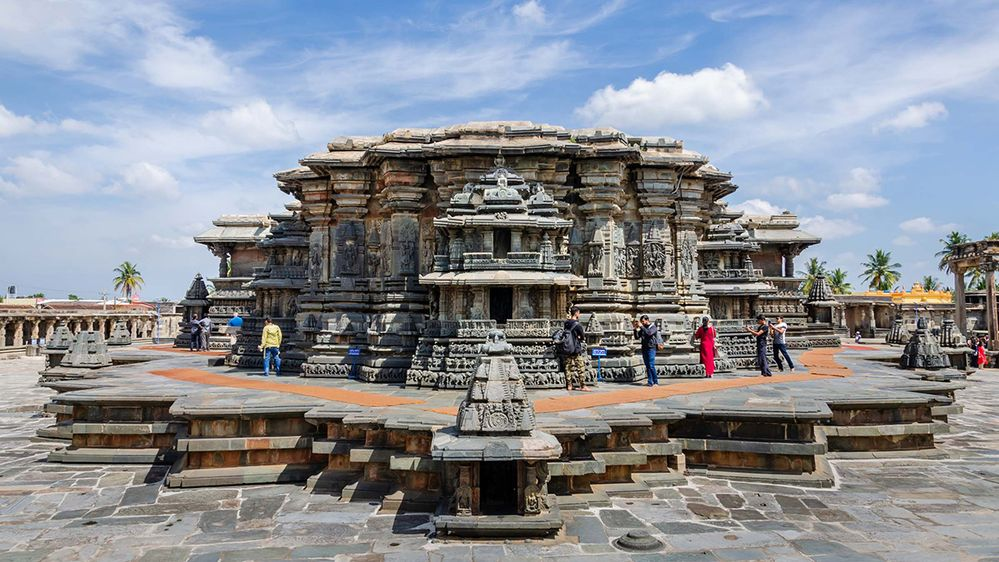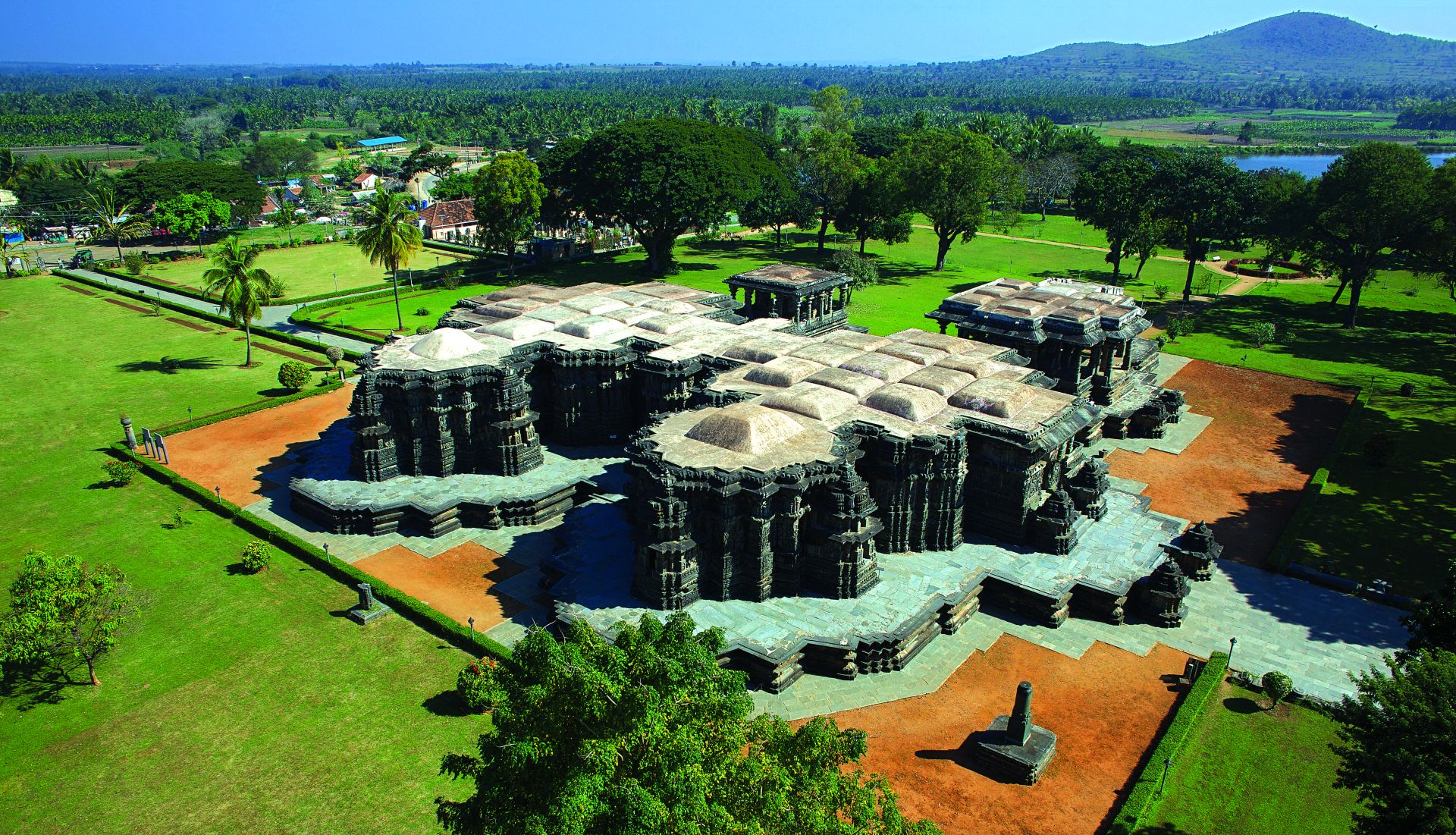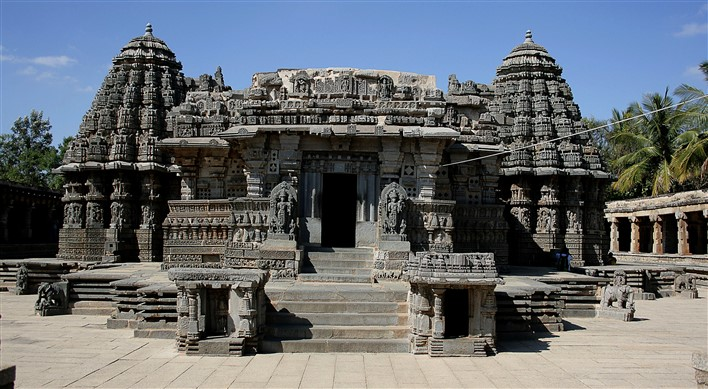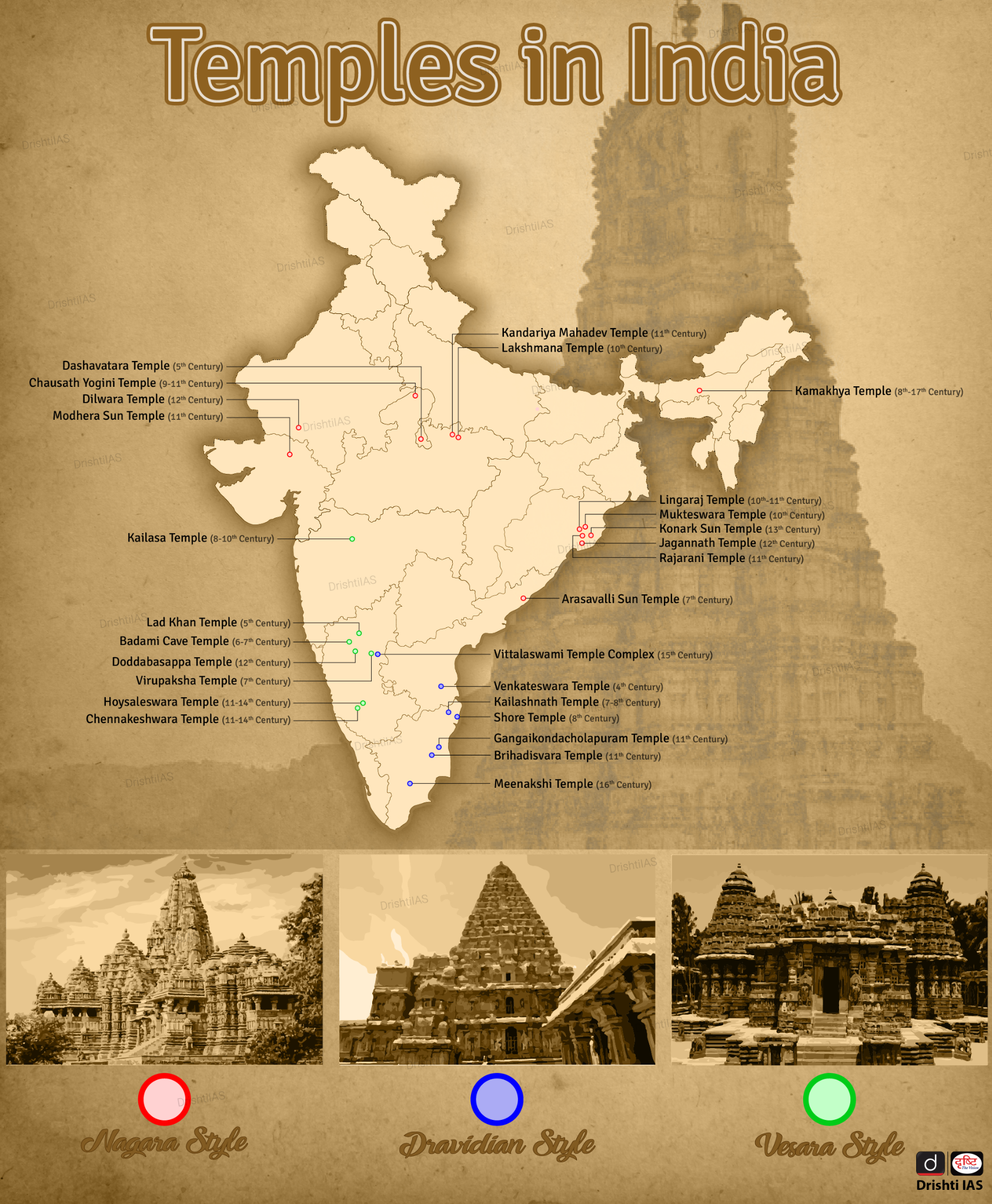Indian Heritage & Culture
Hoysala Temples Now India's 42nd World Heritage Site
- 21 Sep 2023
- 6 min read
For Prelims: UNESCO’s World Heritage List, Hoysala Temple Complex, Hoysala Dynasty
For Mains: Impact of UNESCO World Heritage status on the preservation and promotion of the temples.
Why in News?
The Sacred Ensembles of the Hoysala, the famed Hoysala temples of Belur, Halebid and Somanathapur in Karnataka have been added to the United Nations Educational, Scientific and Cultural Organization (UNESCO) World Heritage list. This inclusion marks the 42nd UNESCO World Heritage Site in India
- Recently, Santiniketan, which is a town located in the Birbhum district of West Bengal, was also included in UNESCO’s World Heritage List.
Note:
- The 'Sacred Ensembles of the Hoysala' have been on UNESCO's Tentative list since April 15, 2014. The other heritage sites in Karnataka which got into the UNESCO list are Hampi (1986) and Pattadakal (1987).
What are the Key Facts About the Hoysala Temples?
- Chennakeshava Temple in Belur:
- It was built by Hoysala King Vishnuvardhana to commemorate his victory over the Cholas in 1116 AD.
- Beluru (also known earlier as Velapuri, Velur and Belapur in olden times) is situated on the banks of the Yagachi River and was one of the capitals of the Hoysala Empire.
- It is a star-shaped temple, dedicated to Lord Vishnu, and is the main temple in the temple complex at Belur.
- It was built by Hoysala King Vishnuvardhana to commemorate his victory over the Cholas in 1116 AD.
- Hoysaleshwara Temple in Halebid:
- This twin-shrined temple is perhaps the largest Shiva temple built by the Hoysalas.
- The sculptures depict various aspects of Shiva, as well as scenes from the Ramayana, the Mahabharata, and the Bhagavata Purana.
- Halebid has a walled complex containing three Jaina basadi (temples) of the Hoysala period as well as a stepped well.
- Keshava Temple of Somanathapur:
- It is a beautiful Trikuta Temple dedicated to Lord Krishna in three forms-Janardhana, Keshava and Venugopala.
- The main Keshava idol is missing, and the Janardhana and Venugopala idols are damaged.
- It is a beautiful Trikuta Temple dedicated to Lord Krishna in three forms-Janardhana, Keshava and Venugopala.
What are the Key Facts about Hoysala Architecture?
- About:
- The Hoysala Temples were built during the 12th and 13th centuries CE, showcasing the unique architectural and artistic brilliance of the Hoysala dynasty.
- All these three Hoysala temples are protected monuments of the Archaeological Survey of India (ASI).
- The Hoysala Temples were built during the 12th and 13th centuries CE, showcasing the unique architectural and artistic brilliance of the Hoysala dynasty.
- Key Elements:
- Mantapa
- Vimana
- Sculpture
- Characteristics:
- These temples are not just architectural wonders but also repositories of the cultural and historical heritage of the Hoysala dynasty.
- Hoysala temples are sometimes called hybrid or vesara as their unique style seems neither completely dravida nor nagara, but somewhere in between. They are easily distinguishable from other medieval temples.
- Hoysala architecture is known for its distinctive blend of Bhumija style prevalent in Central India, the Nagara traditions of northern and western India, and the Karnataka Dravida modes favored by the Kalyani Chalukyas.
- Contain multiple shrines grouped around a central pillared hall and laid out in the shape of an intricately-designed star.
- They are made out of soapstone which is a relatively soft stone, the artists were able to carve their sculptures intricately. This can be seen particularly in the jewellery of the gods that adorn their temple walls.
Hoysala Dynasty
- Origin and Rise:
- The Hoysalas governed areas spanning Karnataka and Tamil Nadu for over three centuries, with Sala serving as the dynasty's founder.
- The first kings came from the hills northwest of Dorasamudra (present-day Halebid), which became their capital in about 1060.
- Political History:
- The Hoysalas were feudatories of the Chalukyas of Kalyana, also known as the Western Chalukya Empire.
- The most notable rulers of the Hoysala dynasty were Vishnuvardhana, Veera Ballala II, and Veera Ballala III.
- Vishnuvardhana (also known as Bittideva) was the greatest king of the Hoysala dynasty.
- Religion and Culture:
- The Hoysala dynasty was a tolerant and pluralistic society that patronized various religions, such as Hinduism, Jainism, and Buddhism.
- King Vishnuvardhana was initially a Jain but later converted to Vaishnavism under the influence of the saint Ramanuja.
UPSC Civil Services Examination Previous Year Question (PYQ)
Prelims
Q. The Nagara, the Dravida and the Vesara are the (2012)
(a) three main racial groups of the Indian subcontinent
(b) three main linguistic divisions into which the languages of India can be classified
(c) three main styles of Indian temple architecture
(d) three main musical Gharanas prevalent in India
Ans: c
Mains
Q. Chola architecture represents a high watermark in the evolution of temple architecture. Discuss (2013)










